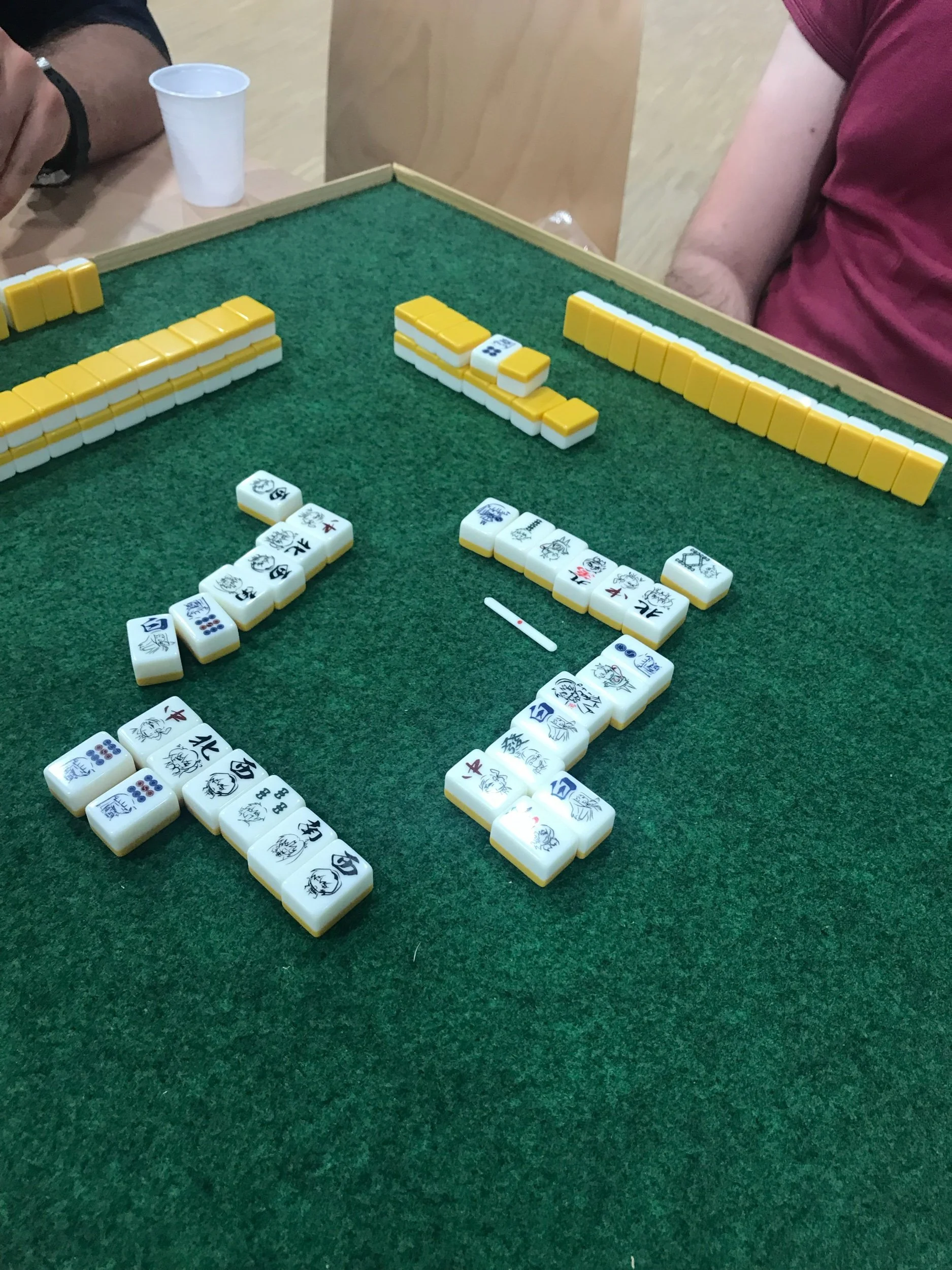What is Defence in Riichi?
As players make the jump from basic to intermediate, the inevitable first desire is: I want to learn to defend!
On the surface that’s a self evident statement. They want to win and they’ve caught on to the fact that an element of that is to reduce the number of points they give away. But before we actually start studying the tools of defence in riichi, it’s often a good idea to dig into what defence actually means. After all, it’s not like your opponents are delivering actual blows that you can block or counter (at least not at a certified event!). The way we defend is more subtle and the definition of defence can accordingly be more nuanced.
Riichi mahjong at its basic level is winning a hand before your opponents can. The starting strategy is thus to just be faster than your opponents. Push hard and close the hand out fast, shutting down their slower (but perhaps more expensive hand).
Let’s say that’s not an option, now you’re really taking your tiles and rather than building a hand for an attack, you’re going to use them to defend against your opponent. Here is where beginners start to establish their understanding of defence, and quickly pick up that they now need to prevent their opponents from winning. The easiest way to do that is not play winning tiles for other players.
Lots of players in the west have become fairly expert at this. An opponent declares riichi and they adeptly throw out safe tiles and read the (omote) suji to avoid playing in.
This might be where a lot of players stop working on their defence… However, there is plenty still to learn!
If a player wants to elevate their defensive skills, they should be alert from much earlier than a riichi call or a player looking obviously dangerous. Any pon or chi that an opponent calls is something that is progressing their hand. So although you may not have paid them points from a ron, you have accelerated their hand toward a potential tsumo.
We’ve all done it. Thrown out a suit we know to be dangerous and breathe a sigh of relief when it is only called for a meld and not called for a win. I propose that if you really want to get serious about defence, that is not a time for relief. Instead of defending, you’ve armed your opponent to make an attack on you!
The final element of defence is playing the harrowing balancing act of not giving up your hand while still defending. Note that this isn’t the same as when you have that winning sanbaiman beast that you have to play. In that case, you’re quite rightly just pushing. I’m talking about that hand that sits on a line between attack and defence; is middling in points but has some nice shapes or maybe dora. Those are the hands where you can really show off your defensive reading skills. You dance around the dangerous tiles and just slide past your opponents’ attacks to victories. It’s tough to pull off, but when you do it’s the sweetest of all the feelings riichi mahjong has to offer.
TLDR:
The stages of a player’s defensive strategy progression will often fall broadly into the following stages:
Stage 1 - learning to play as safely as possible in reaction to a sign of dangers (reactive)
Stage 2 - learning to not progress opponents’ hands in any way through providing the tiles they want to call (proactive)
Stage 3 - learning to carefully push a hand through reading opponents’ discard pools (passive)
The key to moving forward through these stages is being able to “read” the table. An imperfect art but a useful one!


